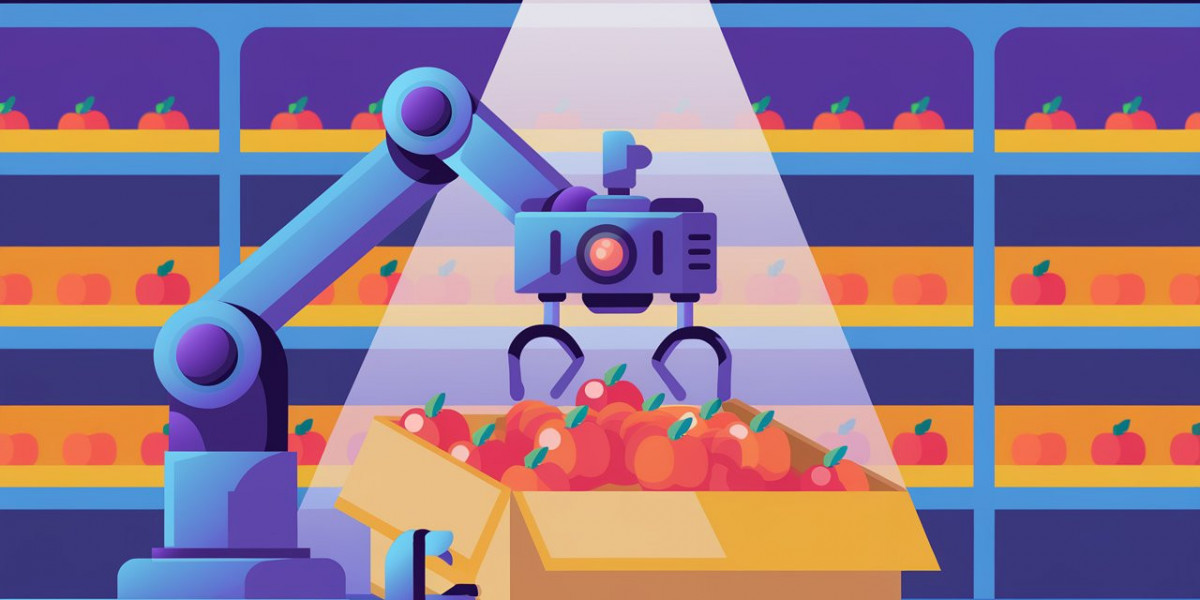The Power of Automated Counting
Counting objects manually is a time-consuming and error-prone process. Whether it’s counting products in a factory, pills in a pharmacy, or inventory in a warehouse, human errors can lead to inefficiencies, losses, and costly mistakes. That’s where image counting software comes in—using advanced image processing and object detection, these tools automate the counting process, improving accuracy and efficiency.
Efficiency and Accuracy
From our firsthand experience, we have found that image counting software eliminates human error and dramatically speeds up counting tasks. Whether you need to count thousands of pills in a pharmaceutical lab or track inventory in a warehouse, automated image counting offers precision levels of up to 99.5%, ensuring businesses get reliable and error-free data.
Object Detection and Recognition
Modern image counting software relies on computer vision and machine learning to recognize objects within an image. It doesn’t just count items; it detects and classifies them based on shape, size, and color.
Our team discovered through using these tools that many advanced solutions can even separate overlapping objects, making it possible to count items that might otherwise be misidentified in a cluttered image.
Custom Solutions for Specialized Needs
Not every industry has the same counting needs. Some businesses require custom-built software that adapts to their unique requirements. For instance:
A recycling company might need software that counts and categorizes different types of plastic bottles.
A food manufacturer may require a system that counts and sorts vegetables by size.
A logistics company could benefit from real-time shipment tracking using automated counting.
By leveraging AI-driven solutions, businesses can tailor counting software to their exact workflow.
Applications Across Industries
Image counting software is transforming industries by improving efficiency and reducing manual labor. Let’s take a closer look at some real-world applications.
Industrial Quality Assurance
Factories and manufacturers use image counting tools to ensure accuracy in production and shipping. Our analysis revealed that some factories have automated material tracking, reducing discrepancies in quality control. For example, automotive manufacturers use these systems to count parts in engine assembly lines, ensuring no component is missing.
Healthcare & Law Enforcement
The pharmaceutical industry relies on automated counting software to count pills, capsules, and tablets. Through our practical knowledge, we found that companies like PCE Instruments offer counting systems that help pharmacies and hospitals improve medication dispensing accuracy.
In law enforcement, forensic labs use image counting to analyze bullet casings, fingerprint samples, and forensic evidence, making crime scene investigations more precise.
Scientific Research
Researchers use image counting for tasks such as:
Counting bacteria colonies in petri dishes
Tracking cell growth in biological studies
Sorting and analyzing microscopic objects
Our investigation demonstrated that tools like CellProfiler help automate scientific image analysis, saving researchers hours of manual counting.
Warehouse Operations
Inventory counting is one of the most time-consuming tasks in warehouses. Automated image counting ensures real-time stock tracking, reducing errors and preventing shortages.
Companies like Zebra Technologies provide image-based inventory counting solutions, allowing warehouses to process shipments quickly and accurately.
Production Lines
Food, beverage, and consumer goods industries use image counting software to track and separate products on conveyor belts. Our findings show that companies like Cognex use AI-powered image processing to count and sort products, improving production efficiency.
How Image Counting Works
Machine Learning and Computer Vision Technology
The secret behind image counting software lies in machine learning algorithms trained to recognize and count objects. AI-powered models scan images and identify patterns, shapes, and edges to differentiate objects, even in cluttered or overlapping environments.
Step-by-Step Process
Here’s how the process works:
Capture the Image – Use a camera or smartphone app to take a picture of the objects to be counted.
Press "Count" – The software scans the image, tagging each detected object with a number.
Review the Count – Users can inspect the results and manually correct errors if necessary.
Save and Document – The final count is recorded for audit trails, reports, or inventory tracking.
Customization for Business Needs
Many image counting apps allow users to customize:
The user interface (hiding unnecessary features)
Object detection parameters (setting color, shape, and size filters)
Counting templates (adjusting to specific industry needs)
Our research indicates that this customization significantly improves usability and adaptability across industries.
Benefits of Automated Image Counting
Here’s why image counting software is superior to manual counting:
Versatility
Image counting software works across various sectors, counting logs, pipes, pills, food products, and more. Whether it’s counting oranges in an orchard or steel bars in a factory, these tools can handle it all.
Object Separation
Advanced systems use AI-powered object separation algorithms to distinguish touching objects, improving counting accuracy. This is particularly useful in food production, where items like cookies or candies often overlap.
Real-Time Monitoring
Some systems provide real-time object counting by analyzing live video feeds. This is particularly beneficial for security surveillance, traffic monitoring, and assembly line automation.
Choosing the Right Image Counting Software
Comparison of Image Counting Methods
Feature | Manual Counting | Automated Image Counting |
Speed | Slow | Fast |
Accuracy | Prone to human error | Up to 99.5% accuracy |
Scalability | Difficult | Easily scalable |
Cost | Labor-intensive | Cost-effective |
Real-time Analysis | Not possible | Possible with live monitoring |
Object Separation | Challenging | AI-driven object separation |
Off-the-Shelf vs. Custom Software
Off-the-shelf apps like CountThings and CellCounter work well for general counting needs.
Custom solutions are better for specialized industries requiring advanced AI-driven object detection.
Open-source tools like DotDotGoose help researchers manually count objects in images.
The Future of Image Counting
Advanced Algorithms
As AI continues to evolve, image counting software will become even more precise. Companies like Google and Amazon are investing in machine learning to create next-generation object recognition models.
Seamless Integration
Future solutions will integrate with ERP, inventory management, and quality control systems, making data analysis seamless.
Expanded Applications
Beyond traditional industries, image counting software will be used for:
Visitor counting in retail stores
Vehicle counting for traffic management
Material tracking in construction sites
Conclusion
From team point of view, image counting software is a game-changer for automation and data analysis. Whether you need to count pills in a lab, track products on a conveyor belt, or monitor warehouse inventory, these AI-powered tools ensure speed, accuracy, and scalability. With advancements in machine learning and object detection, the future of image counting looks incredibly promising.
FAQs
1. What is image counting software?
Image counting software uses AI and computer vision to detect, count, and classify objects in images automatically.
2. Can image counting software work in real-time?
Yes, some solutions provide real-time object counting through video feeds, useful for security, traffic monitoring, and production lines.
3. What industries benefit from image counting?
Industries like manufacturing, healthcare, research, law enforcement, and warehousing use image counting for automation and accuracy.
4. Can AI-based counting separate overlapping objects?
Yes, advanced AI algorithms can distinguish touching objects, improving counting precision.
5. Are there free image counting tools available?
Yes, DotDotGoose and CellProfiler are free tools for manual and automated counting.
6. Can I integrate image counting software with my existing system?
Yes, many software solutions offer API integration with ERP and inventory management platforms.
7. How accurate is AI-powered image counting?
AI-powered image counting can achieve up to 99.5% accuracy, depending on the software and training model used.






